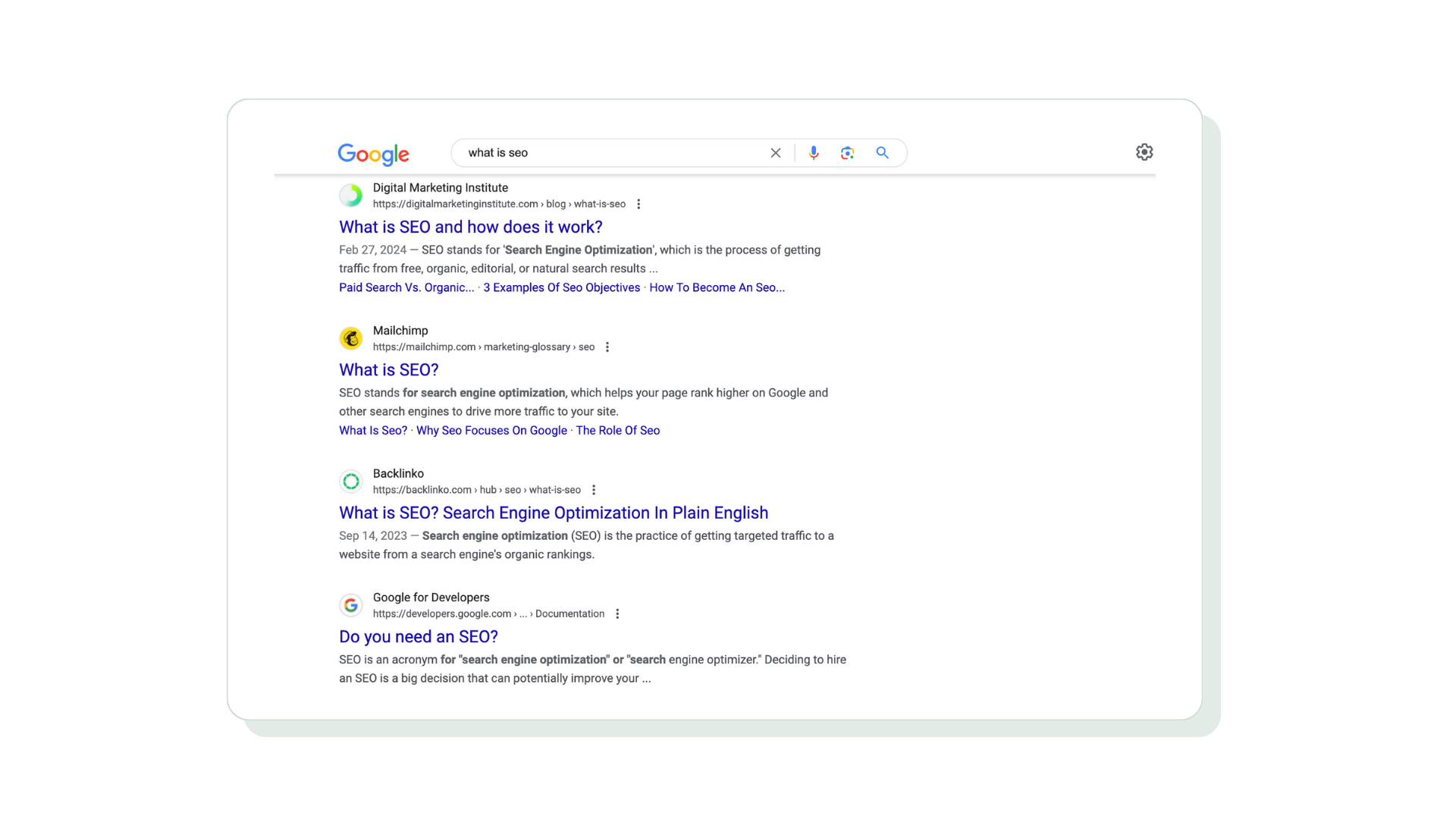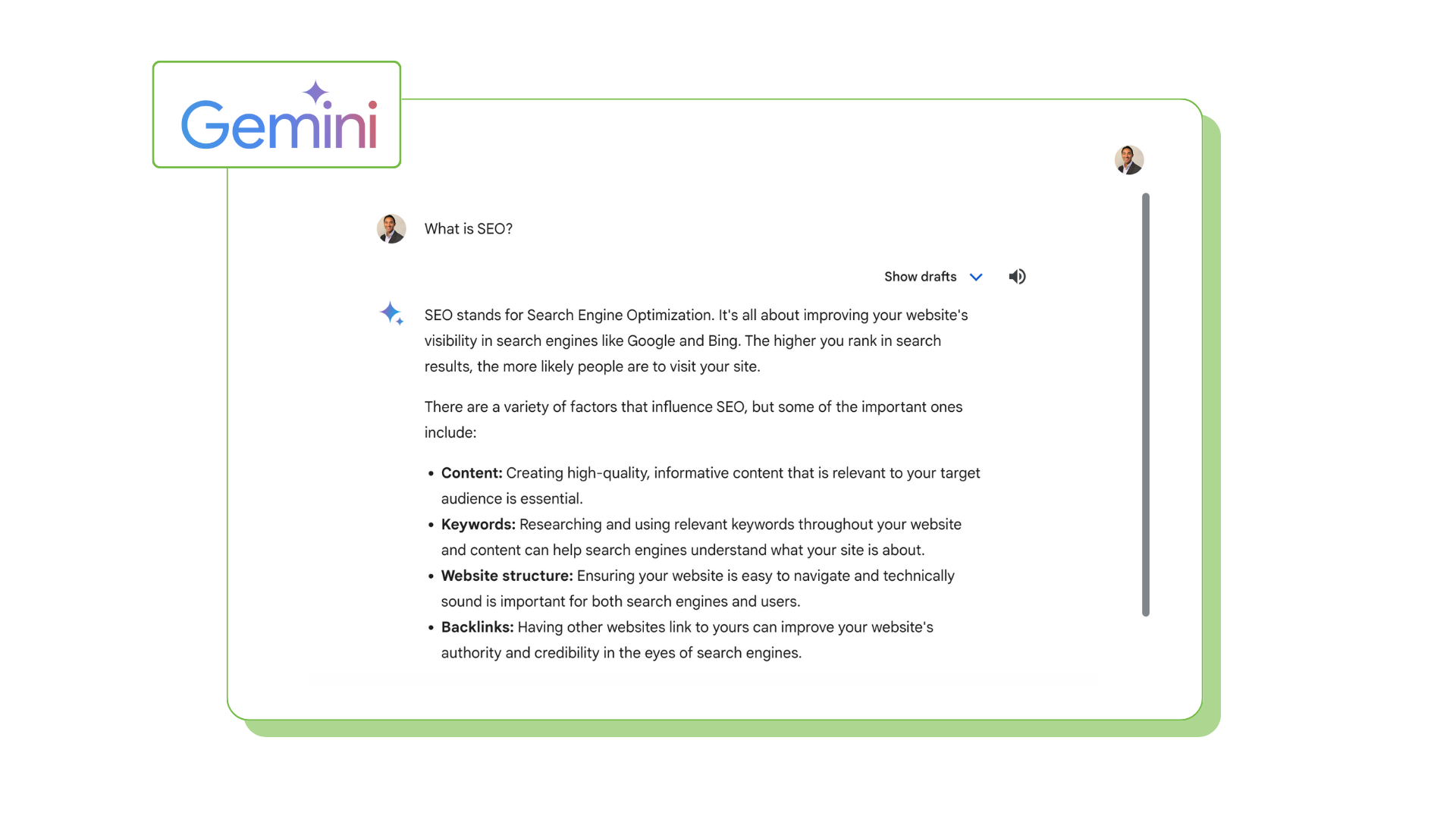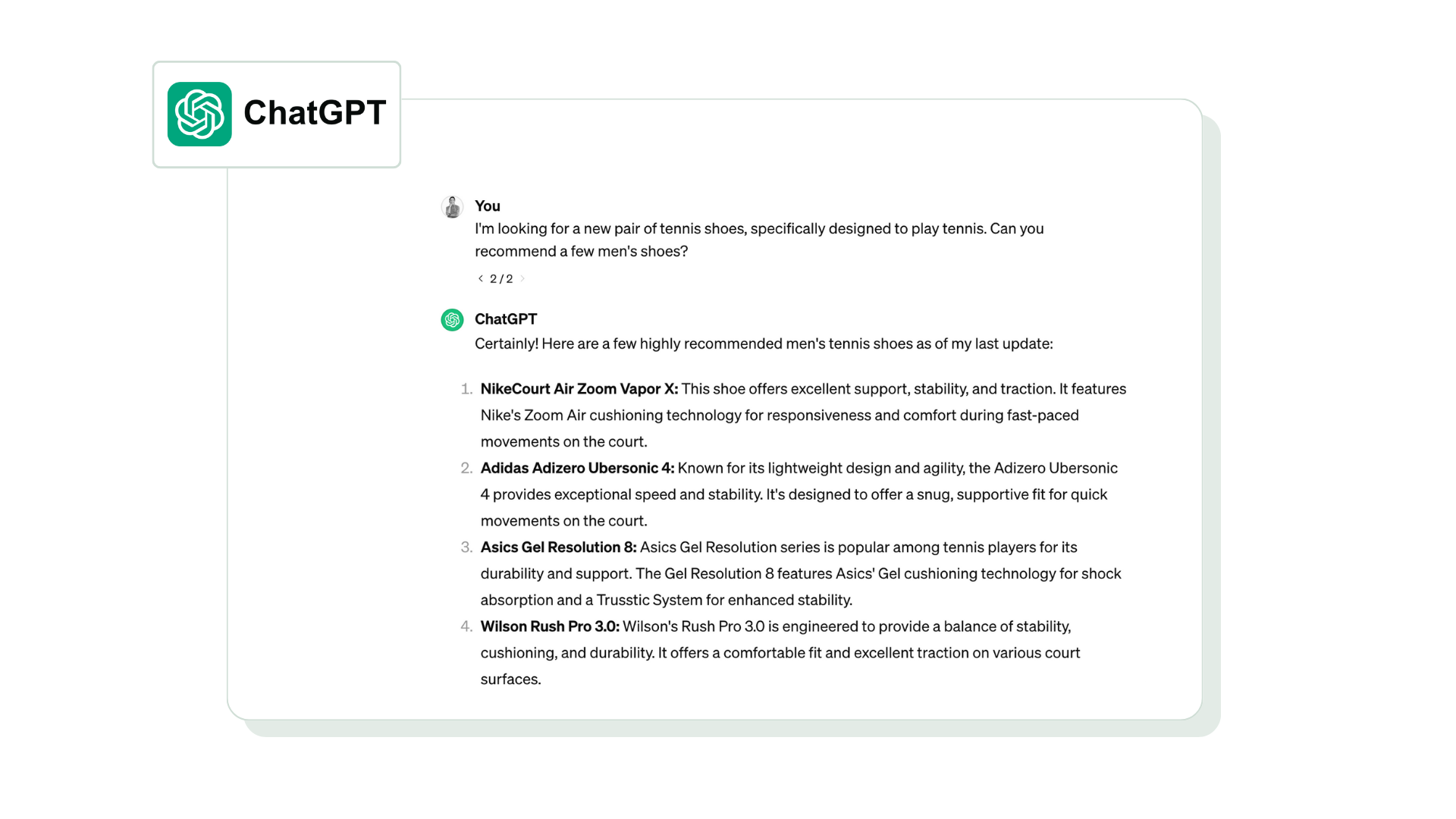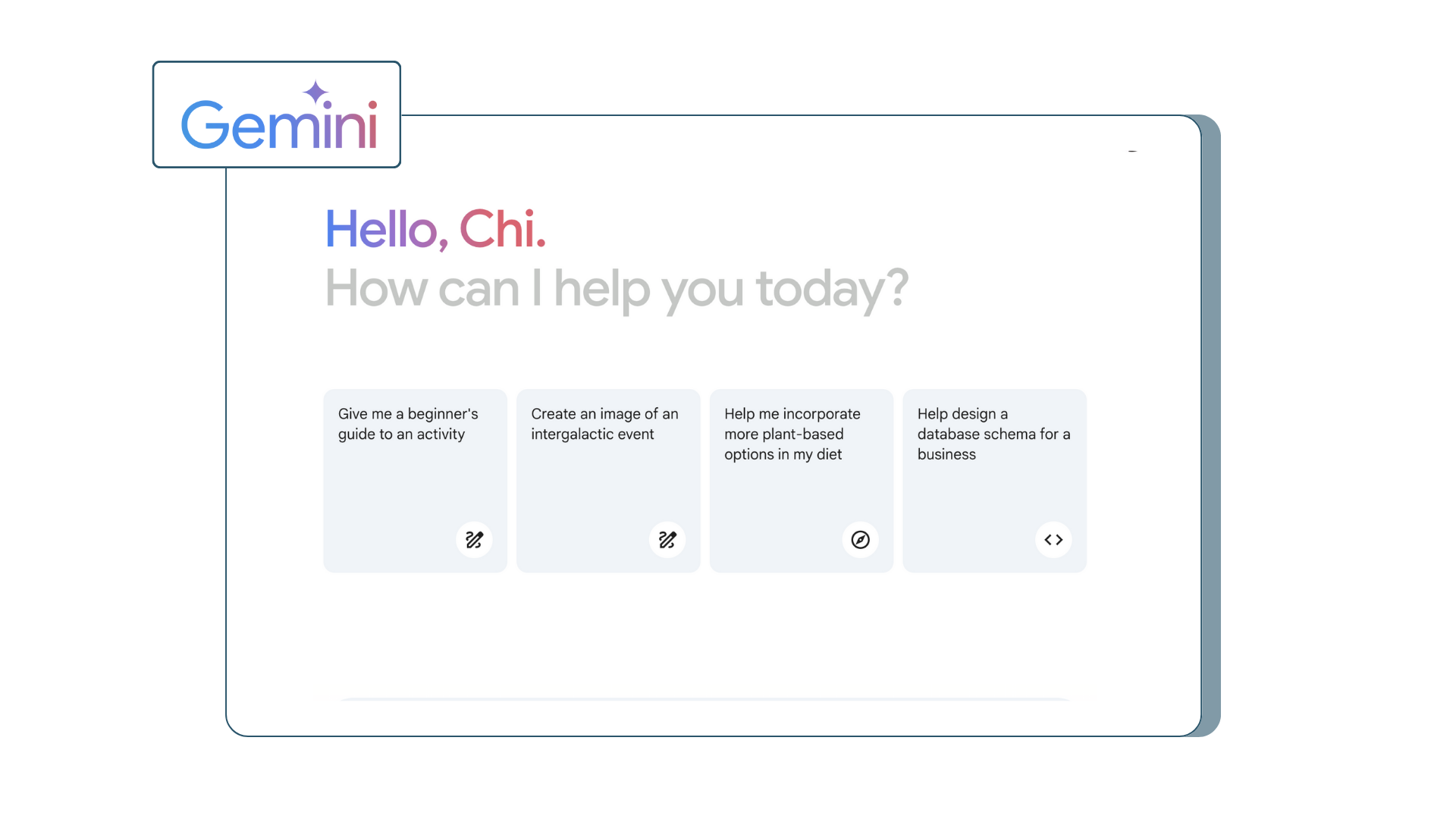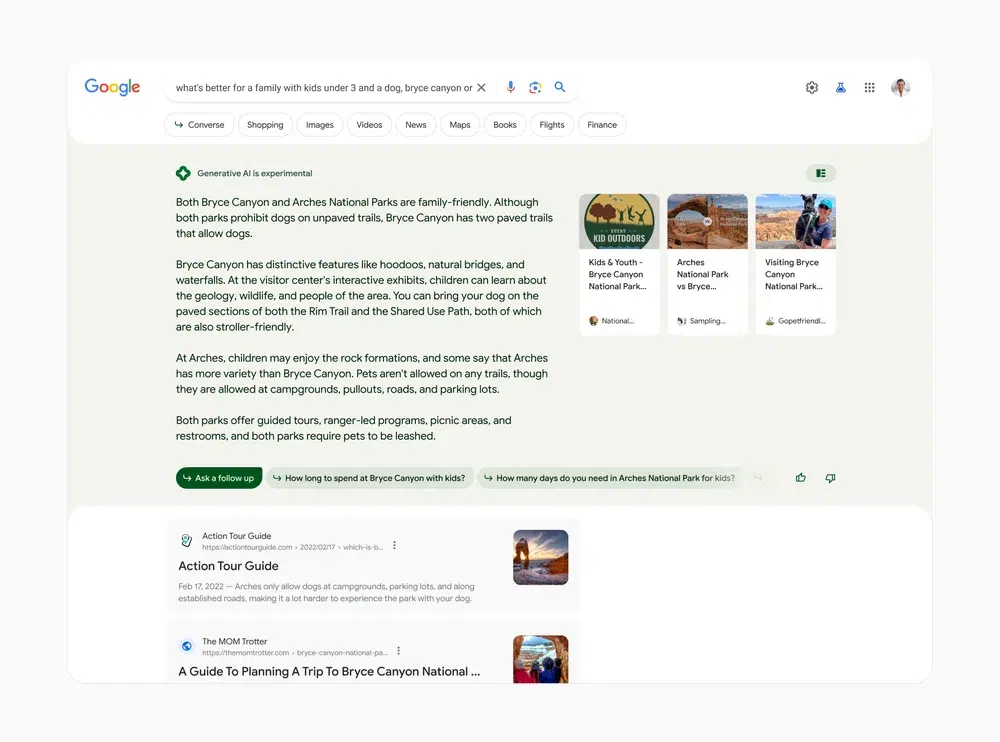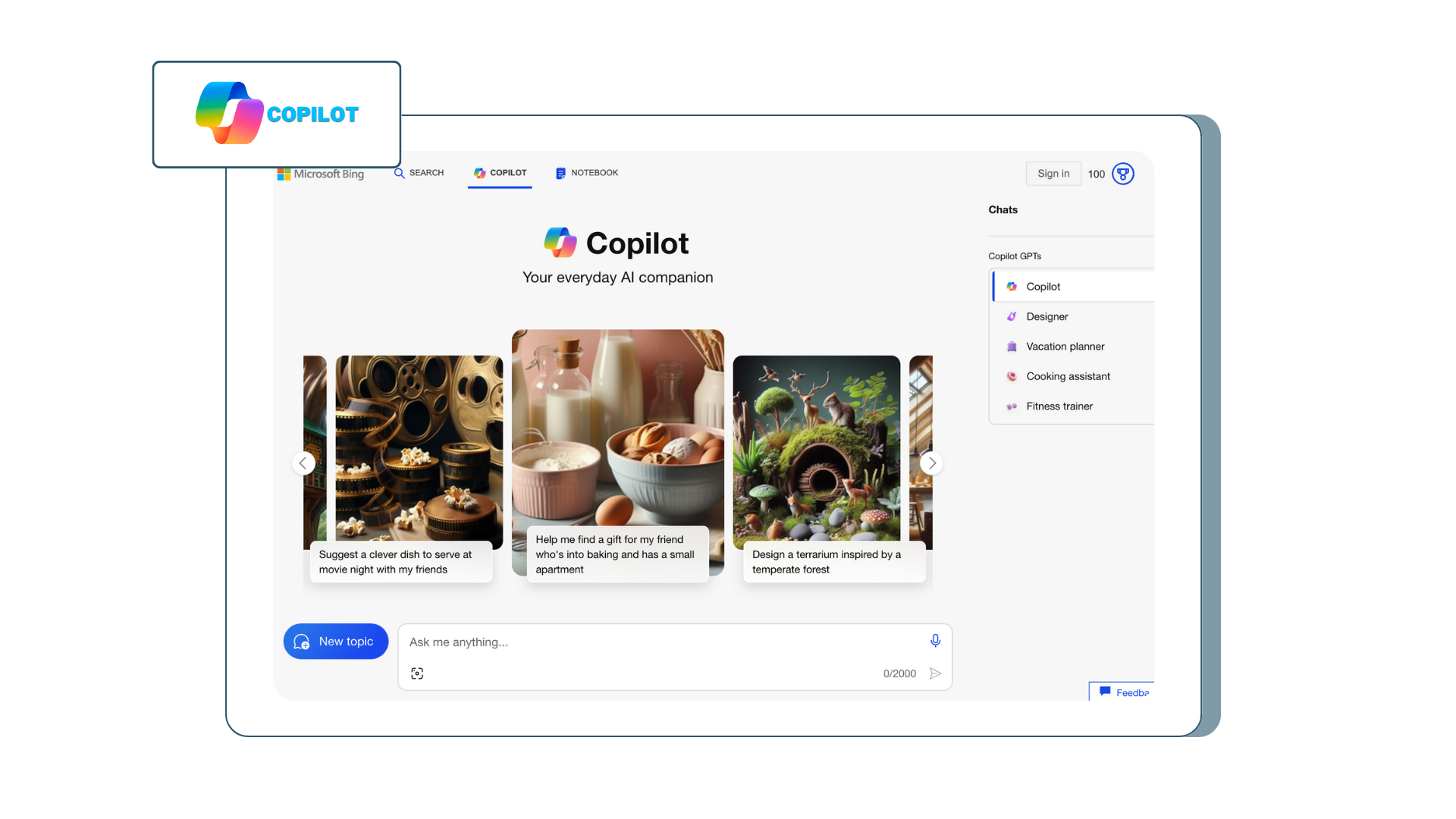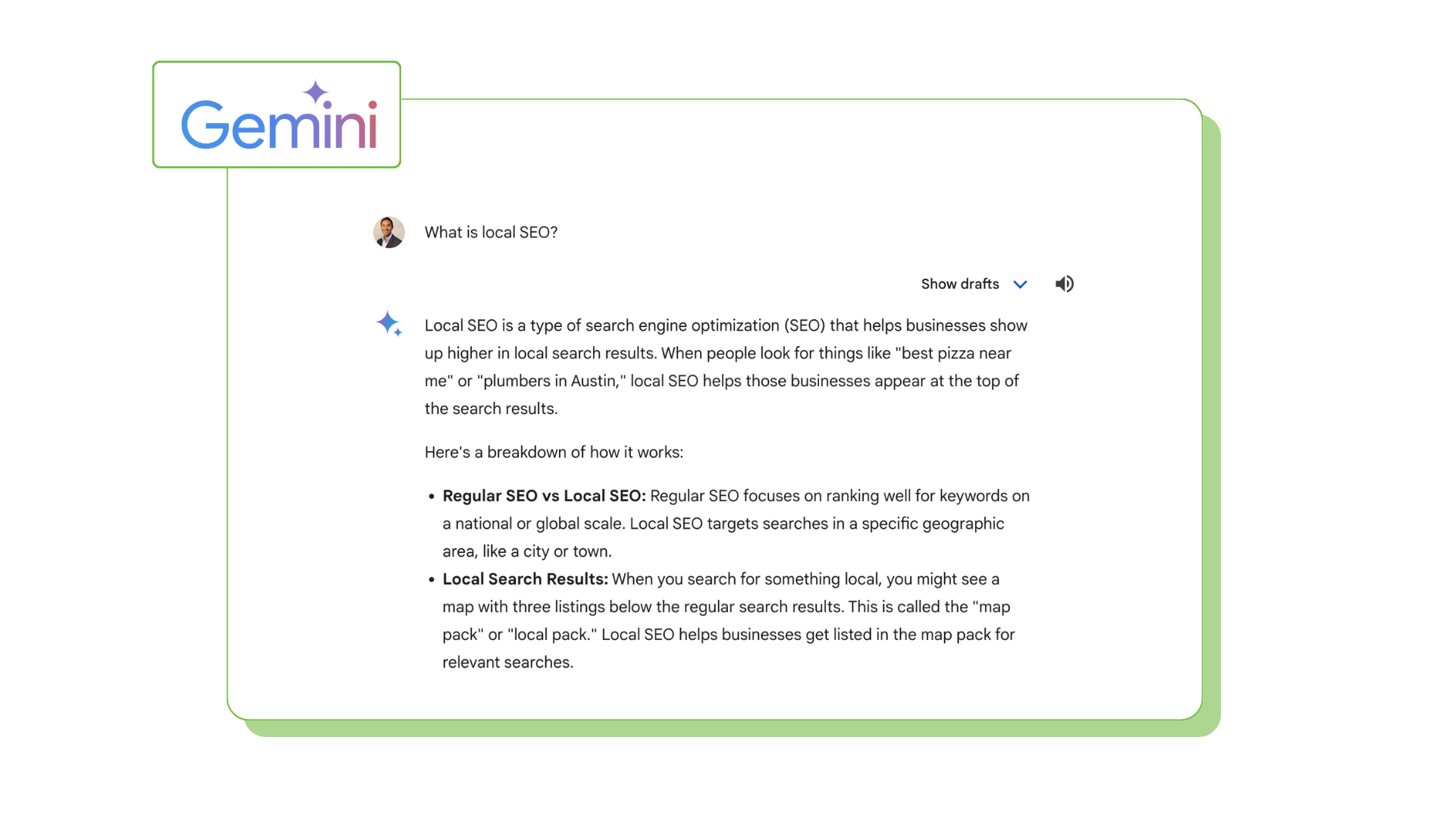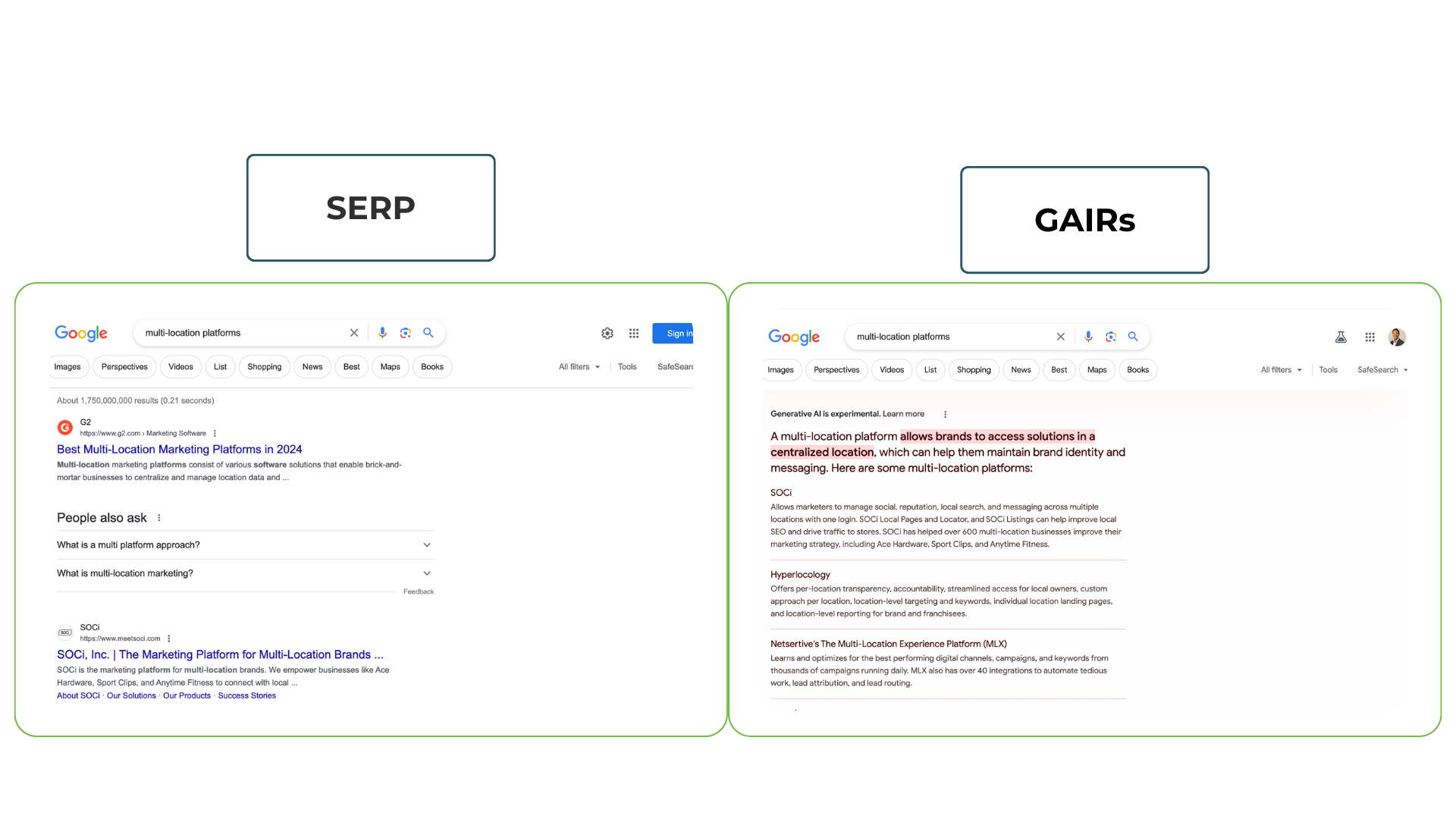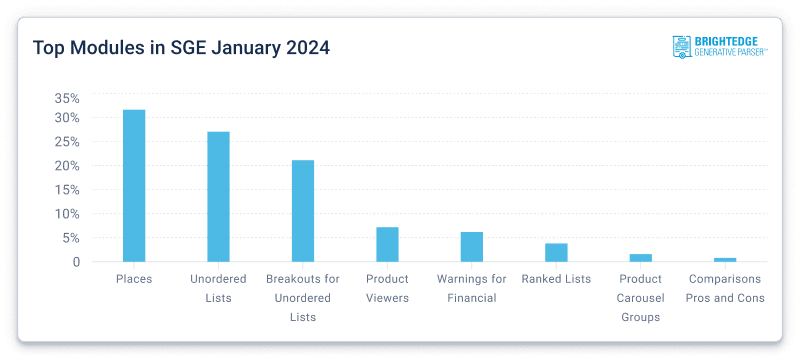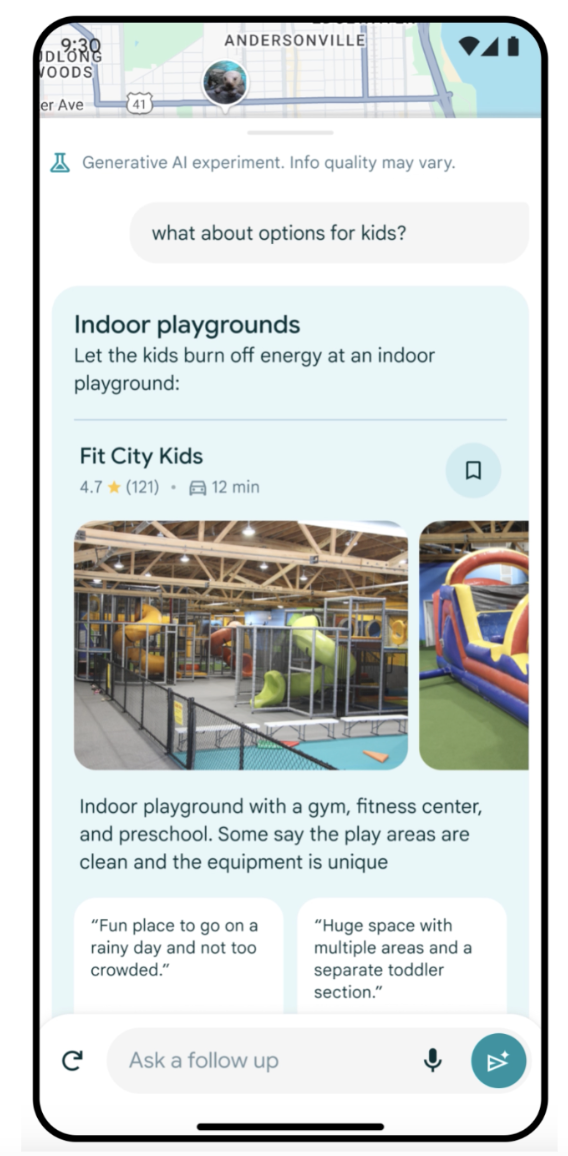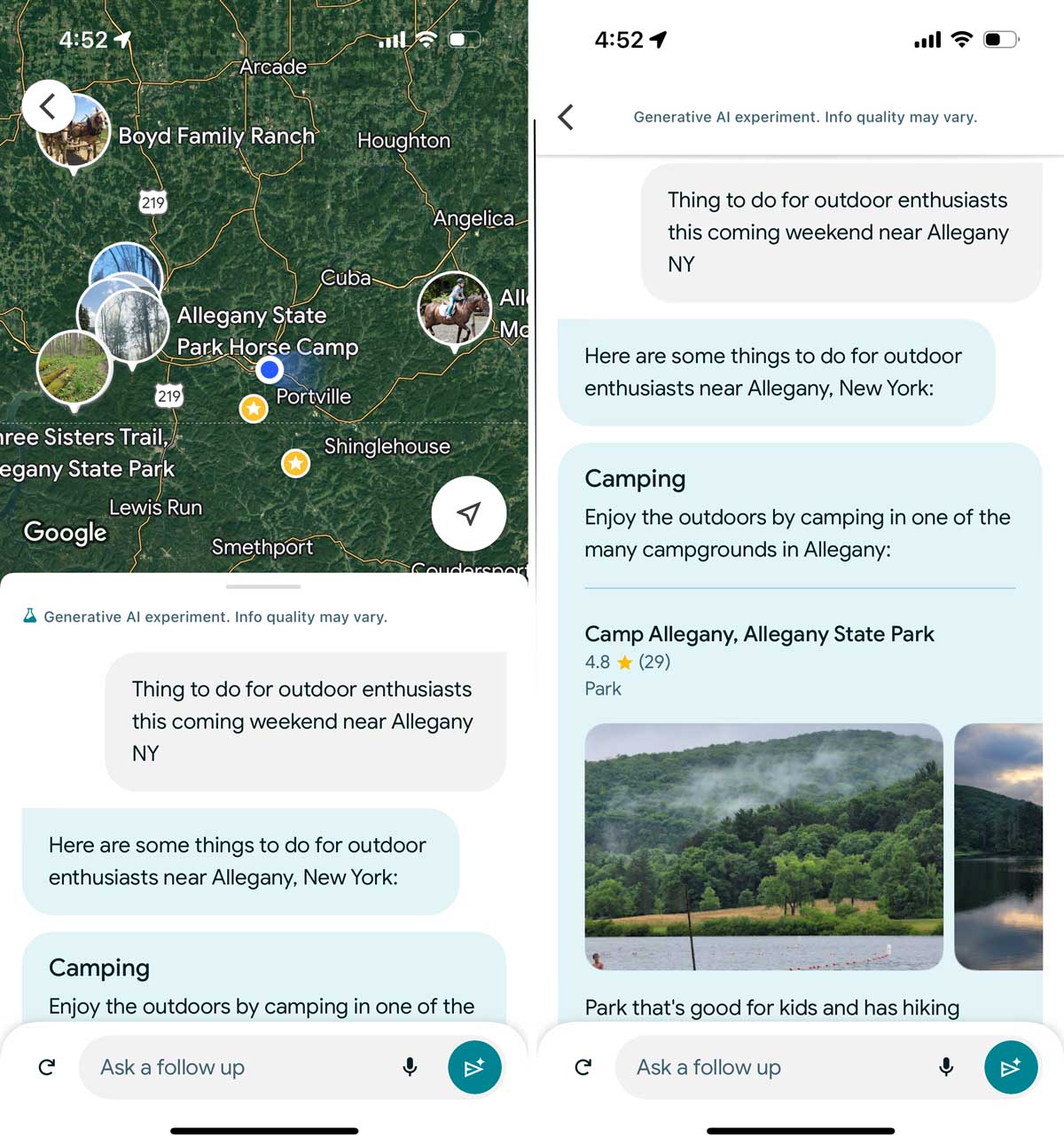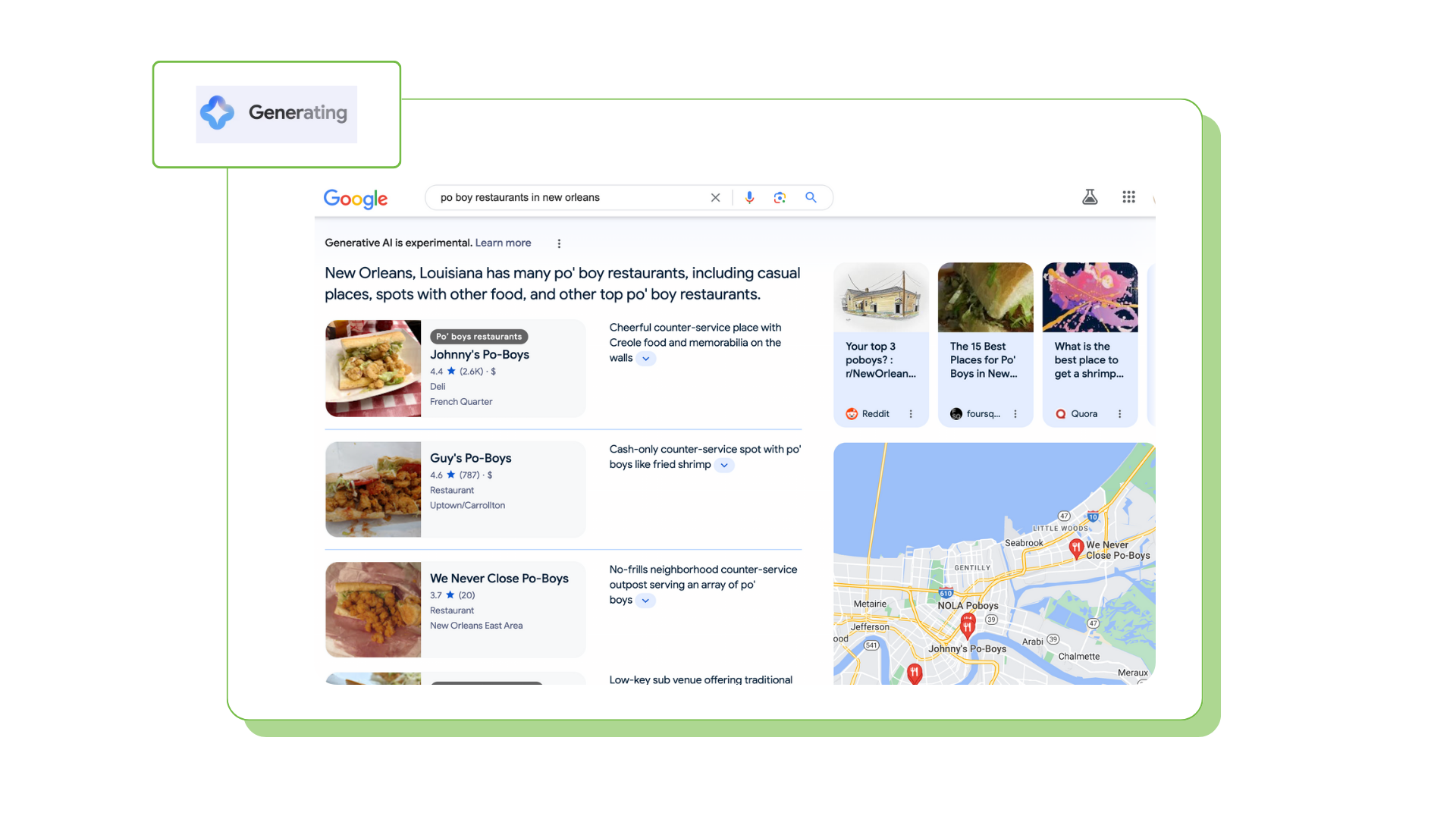Generative Engine Optimization (GEO): The New SEO for GenAI Results
Artificial intelligence (AI) has dramatically shifted how people interact with and use technology over the past few years. Notably, AI is changing how search engines operate. These AI advancements have begun to turn search engine optimization (SEO) into generative engine optimization (GEO).
Because these ‘optimization’ parameters have shifted, we’re here to help you stay ahead of this paradigm shift and familiarize you with this emerging search landscape.
In this article, you’ll learn the following:
- The evolution of search
- AI’s impact on search and SEO
- Must-know AI chatbots and LLMs
- The implications and challenges of GEO
- Novel changes in local SEO
The Evolution of Search and SEO
Table of Contents
Historically, tech companies like Google created search engines to help people find information. These search engines index websites and surface relevant results based on users’ queries.
As search engines became widely used, search engine optimization (SEO) became integral to digital marketing. SEO specialists emerged as digital guides for businesses, helping boost online visibility through blogs, images, videos, and more.
However, this dynamic has radically shifted within the past decade. Gone are the days when keyword stuffing and link-building were some of the main staples of an SEO strategy.
Today’s search engine algorithms, which are still run by tech giants like Google and Microsoft, are fueled by AI to populate relevant search results. These tech companies hope generative AI (GenAI) can more accurately answer people’s questions or search queries.
How AI is Changing the SERP
Traditionally, search engine results pages (SERPs) primarily consisted of ten blue links to web pages, ranked on their relevance to the search query. Users would click through these links to find needed information, often navigating through multiple websites or pages to piece together answers.
Most people still use Google and other traditional search engines. However, the integration of GenAI technologies into chatbots and large language models (LLMs) shifts how information is presented and accessed online.
LLMs refer to advanced AI algorithms that are trained on vast amounts of data and use deep learning techniques to understand, summarize, and generate human-like language.
Instead of presenting a simple list of links on search engines, AI-powered chatbots and LLMs engage with users. They’re conversational and often provide concise, comprehensive answers or summaries drawn from across the web.
Currently, you need to sign up for these LLM search engines, like Google’s Search Generative Experience (SGE) via Google Labs. You can also use free versions of Google’s AI chatbot, Gemini, or Microsoft’s chatbot Copilot. More on these different AI-search engines and chatbots later!
As you can see in the image above, these AI chatbots and LLMs are transforming traditional SERP into generative AI results, what we’ll call GAIRs. The GAIRs not only speed up the process of finding information but also aim to create a more interactive and engaging search experience.
AI Chatbots and LLMs You Need to Know
You may be wondering which AI chatbots and LLMs are the main driving factors for these changes in search. It’s the household name tech players and a few emerging ones. Here are the leading AI chatbots and LLMs in search:
OpenAI’s ChatGPT
ChatGPT is a chatbot that leverages LLMs to have conversations with humans. Its public launch in late November 2022 had a ripple effect across the technology world by showcasing the power of GenAI and forcing many SaaS and tech companies to include GenAI capabilities in their software.
In fact, Sam Altman, OpenAI’s CEO, recently reflected in an interview on ChatGPT potentially being used as, or helping support a search engine that gives more direct answers.
Google’s Gemini
Google’s Gemini is a LLM created by Google AI. Google originally called it Bard but rebranded it to “Gemini” in February 2024. According to Google, Gemini is multimodal, meaning it’s trained on, can understand, and can operate across various information types like text, audio, images, and video.
Think of Gemini as the primary underlying technology in its recent AI tech. It’s also a response and a competitor to OpenAI’s ChatGPT.
Google’s SGE (Search Generative Experience)
SGE stems from Google’s Search Labs and is an experiment with GenAI capabilities in Google Search. It’s an ongoing project that Google publicly released before Bard (now Gemini), but actually relies on Gemini to function. Think of SGE as an AI experiment for Google Search. SGE focuses on integrating GenAI into search results, while Gemini provides more user-facing interfaces that allow people to interact and create content with the AI models.
For the most part, it’s still in experimental phasing. However, Google recently started to test AI overviews or results on a “subset of queries, on a small percentage of search traffic in the U.S.” for those who haven’t opted into the SGE experiment.
Courtesy of Google
Bing Copilot
Microsoft launched a new version of its search engine, Bing, in February 2023, allowing you to use its AI chatbot Bing Chat instead of the traditional Bing Search. However, Microsoft rebranded Bing Chat to Copilot in November 2023 and upgraded its capabilities. Copilot runs primarily on OpenAI’s ChatGPT.
Bing Copilot is a competitor to Google’s Gemini and SGE. It’s an AI assistant that can produce search results, images, and help develop ideas.
Main Challenges SEOs and Marketers Face with GAIRs
As you can see, these AI chatbots, LLMs, and their generative AI results (GAIRs) profoundly impact the traditional SEO landscape, posing new challenges for marketing teams and SEO professionals.
Let’s dive into the four main issues SEOs face with integrating GenAI chatbots and LLMs.
1. Reduced Visibility of Traditional Search Results
AI-driven responses give you quick summary answers, particularly for informational queries, like “what is SEO.” Because of these short in-depth responses, there’s less chance your business gains visibility, increasing the competition for these specific results.
2. Direct Answers Limit Web Traffic
Many user inquiries are answered directly on the GAIR with a list of text generated by AI. As mentioned above, informational search queries often don’t produce sources or links.
These direct answers to queries significantly reduce — or sometimes eliminate — the need to click through to other websites, intensifying the competition for user clicks.
3. Adaptation To Generative AI Results
The potential rise of AI-powered search engines and chatbots demands that SEO and content marketers optimize content that appeals to human readers and aligns with AI and LLMs’ criteria.
For instance, should Google’s SGE roll out more widely, grasping how results are selected becomes paramount, and tailoring content accordingly becomes crucial.
4. The Constant Evolution of AI Models
AI technologies’ rapid development and update cycles make it challenging for SEO professionals to stay ahead. These tech companies are reacting to human adoption, technological challenges, and legal frameworks in different countries.
These challenges underscore the need for SEO professionals to innovate and continually adapt their strategies to thrive in the era of GAIRs.
How to Influence GAIR With GEO
As you can see, these AI-powered chatbots and search engines challenge how SEOs and marketing teams will ensure their businesses and brands appear in GAIRs.
While traditional SEO efforts are still crucial, these challenges further emphasize the need to begin incorporating generative engine optimization (GEO) — or how you can influence these AI results.
1. Traditional Ranking Factors Stay Similar
First, know that right now, these AI results still populate a lot of the same material found on page one of the traditional SERP. The difference is these AI results are more synthesized and direct.
Remember, AI-driven search engines still rely on many ranking factors that traditional search engines do. Google and Bing didn’t completely overhaul their search engine ranking systems overnight for these LLMs and AI chatbots.
What’s worked in the past for traditional search engines still works today, such as:
- Creating human-first content that’s interesting and helpful
- Having a clear and concise structure that humans and LLMs can follow by using headings, subheadings, and bullet points for easy readability
- Including relevant keywords in URLs and headings, but not going overboard with keyword stuffing
2. Rely on E-E-A-T
In December 2022, Google updated its quality rater guidelines by adding an extra E to E-A-T; the acronym now E-E-A-T stands for Experience, Expertise, Authoritativeness, and Trustworthiness.
Note that according to Google, E-E-A-T isn’t a ranking factor. Instead, it’s a guideline or checklist that helps ensure content demonstrates the qualities within the acronym, focusing on delivering helpful information. When developing content, it’s always important to keep E-E-A-T in mind.
“As a reminder, these guidelines are what are used by our search raters to help evaluate the performance of our various search ranking systems, and they don’t directly influence ranking.” — Elizabeth Tucker, Director of Product Management at Google
3. Include Citations, Quotes, and Statistics
A group of researchers from several major universities tested nine GEO strategies to see which boosted visibility in GAIRs. Below are the top three optimization strategies and their definitions:
- Cite sources: Add relevant citations from credible sources.
- Include quotations: Add relevant quotations from credible sources.
- Statistics Addition: Modify content to include quantitative statistics instead of qualitative discussion, wherever possible.
These three strategies achieved 30-40% visibility improvements compared to the baseline. It’s not unsurprising since these three strategies align with E-E-A-T and make your content more credible, something traditional search engines and GenAI chatbots seem to value.
Lastly, the study also found that stylistic changes, called “Fluency Optimization and Easy-to-Understand,” also resulted in a 15-30% boost in visibility.
This finding suggests that SEOs, content creators, and website owners should present their content in a helpful, digestible, and concise manner to improve their appearance in GAIRs.
Local SEO in the Age of GEO
We’d be remiss not to mention local search or local SEO when it comes to GEO. For brick-and-mortar establishments and multi-location businesses, the rise of GAIR in local searches presents an opportune moment.
So far, Google has been slow to roll out GenAI to its primary local search product, Google Maps, especially compared to the advancements in Google Search.
However, BrightEdge research found that SGE users often utilize AI for local search. BrightEdge revealed that SGE produces different modules depending on the type of search query. In the SGE code, local queries connect to local modules called “Places.”
From December 2023 to February 2024, over a third of the top modules were Places, i.e., searches with local intent.
Courtesy of BrightEdge
This research showcases that people use SGE for local searches. On February 1, 2024, Google announced the rollout of GenAI to Google Maps to select Local Guides in the U.S.
Local Guides often write reviews, share photos, and answer questions on Google Maps, earning perks like early access to new features.
Here’s an example of what these generative AI results look like in Google Maps:
Courtesy of Near Media
Early AI Results in Google Maps
Since GenAI in Google Maps is only for beta testers, there’s limited information or data. That said, Mike Blumenthal of Near Media — a Local Guide with early access to the GenAI in Google Maps — explains his findings.
Blumenthal noted that the GenAI in Google Maps looks like SGE blended into Google Maps. He also found the results to be underwhelming. Below are some of the results and issues he encountered.
Didn’t regard the weather:
The GAIR didn’t consider weather in its results, which is a critical piece of context when asking for outdoor activities to do in western New York in February. While traditional search doesn’t consider weather, outside of hazardous weather, many would expect AI tools to do so.
Courtesy of Near Media
Slower results:
Blumenthal also asked the GenAI for “great Asian food in Buffalo NY.” The generative AI results were nearly identical to what appeared in the local pack in traditional Google Maps search. However, the GenAI took longer to produce.
Limited Responses and Hallucinations:
Lastly, the AI couldn’t process a query when asking for an “upscale nouveau meal with a romantic environment that costs less than $50 per person” in Buffalo, NY.
When entering the same query but for New York City, a hallucination occurred where several places listed were $300-400 a head versus the requested $50 per person.
The Future of Local SEO in Google Maps
It’s early, and AI in local search is still experimental, particularly for Google Maps, but it’s worth noting these results need improvement. The deployment of GenAI in Google Maps and local search results hinges on the tech’s improvement and both user adoption and feedback.
To keep up with the latest in local search and local marketing, subscribe to our Local Memo at the bottom of one of our Local Memo blogs.
How to Influence Local GAIRs With GEO
Because GenAI in Google Maps is so new and SGE is still an experiment, there’s limited research on what affects these rankings.
The previously mentioned BrightEdge research discovered that SGE prominently displays NAP (name, address, and phone number) citations and online reviews in its results, pulling them primarily from Google Business Profiles (GBPs).
Since SGE and Google’s GenAI Maps seem to lead the way in local AI SEO, below are three GEO strategies for these AI models.
1. Complete and Updated GBPs
Optimizing your online local presence will increase the chances of your local business appearing prominently in local SGE or GenAI Google Maps results. Remember, SGE and GenAI in Google Maps are still experimental. From what we’ve seen, they both seem to rely on traditional local search ranking factors.
One of the strongest signals is having a complete GBP with as much accurate information as possible that informs people and search engines what you offer.
Download our local SEO guide for more details on optimizing your GBPs and other critical local listings.
2. Manage Your Online Reviews
Remember, LLMs and these GenAI search engines prioritize consumers’ testimonials and first-hand experience. Google has even stated that SGE pulls in the most helpful information from across the web, including reviews, photos, and GBP details that people have submitted to Google.
Therefore, local businesses must acquire, manage, and respond to online reviews. Furthermore, Google reviews also influence conversions on GBPs. Our research from The State of Google Reviews found that:
- For every 10 reviews earned, the conversion (website clicks, requests for directions, and phone calls) on GBPs increases by 2.8%
- For every 25% of reviews responded to, conversion improves by 4.1%.
Note that this research didn’t include SGE or GenAI results. Still, with Google openly disclosing that SGE considers reviews, it’s likely that high star ratings and positive reviews can only help your local businesses appear on SGE or in GenAI Maps.
While managing and responding to online reviews is critical, it’s also time consuming. Today, you should be using AI to respond to reviews. Our AI automation layer, SOCi Genius, overlaid on top of our reviews software, SOCi Reviews, makes review management plausible.
Companies that implemented Genius Reviews improved response speed by 64% and ratings for new reviews by 0.67 or 17%.
For more details and a look into money saved, download our research report, The Value of AI Assisted Review Response: How to Gain Cost Savings and Efficiency.
3. Include High-Quality Photos
As noted earlier, Google’s SGE considers photos when scouring the internet to produce results. For local businesses, you need high-quality images on your GBPs and website.
Google prioritizes authentic photos, as stated in its content policy. Learn everything you need to know about GBP photos in our article on how to make your GBP more visually appealing.
Conclusion: Embrace the GEO Evolution
As we’ve explored, GEO is rapidly shaping the future of search engine, LLM, and GenAI chatbot rankings. With Google, Microsoft, and other tech companies constantly innovating in this space, marketers and SEO professionals need to stay updated on the latest developments and adapt their strategies accordingly.
Below are our final tips and recommendations!
1. Research, Test, and Learn
It takes time to learn and implement GEO. It requires understanding, experimenting, and possibly failing. Yet, businesses that proactively leap into these learning curves will benefit from those that don’t.
We recommend starting with a few tests for keywords and search queries you want to rank for on these major LLMs and AI chatbots like Gemini, SGE, and Copilot.
Remember, LLMs and these AI search engines focus on holistically understanding users’ search intent. Traditional SEO and search rankings aren’t going away immediately, and what you do for them can still impact GAIRs.
2. Use AI to Optimize Your GEO Tactics
Consider using AI yourself to improve your GEO. For instance, use AI tools for content creation, incorporate AI analysis in SEO strategies, and prepare for AI-driven SEO audits. The key is to start, learn, and refine.
3. Staying Ahead
We’re at the inception of an era where AI isn’t just an asset but is manipulating digital discovery. Remember that GEO is a collective learning curve. Engage with other marketers, team members, and companies also implementing GEO practices.
This engagement will help you stay informed and polish your GEO tactics. Lastly, give feedback on poor results. This could influence how these tech giants utilize generative AI; they, too, care about the user experience and want to deliver helpful tools.
If you’re a multi-location business needing assistance managing your local stores’ SEO, online reviews, and social pages, get in touch with SOCi.
We have over a decade of experience with local SEO and have incorporated AI into our CoMarketing Cloud to make managing local businesses a breeze. We also keep our clients appraised of significant shifts in general and local search, such as GEO.
